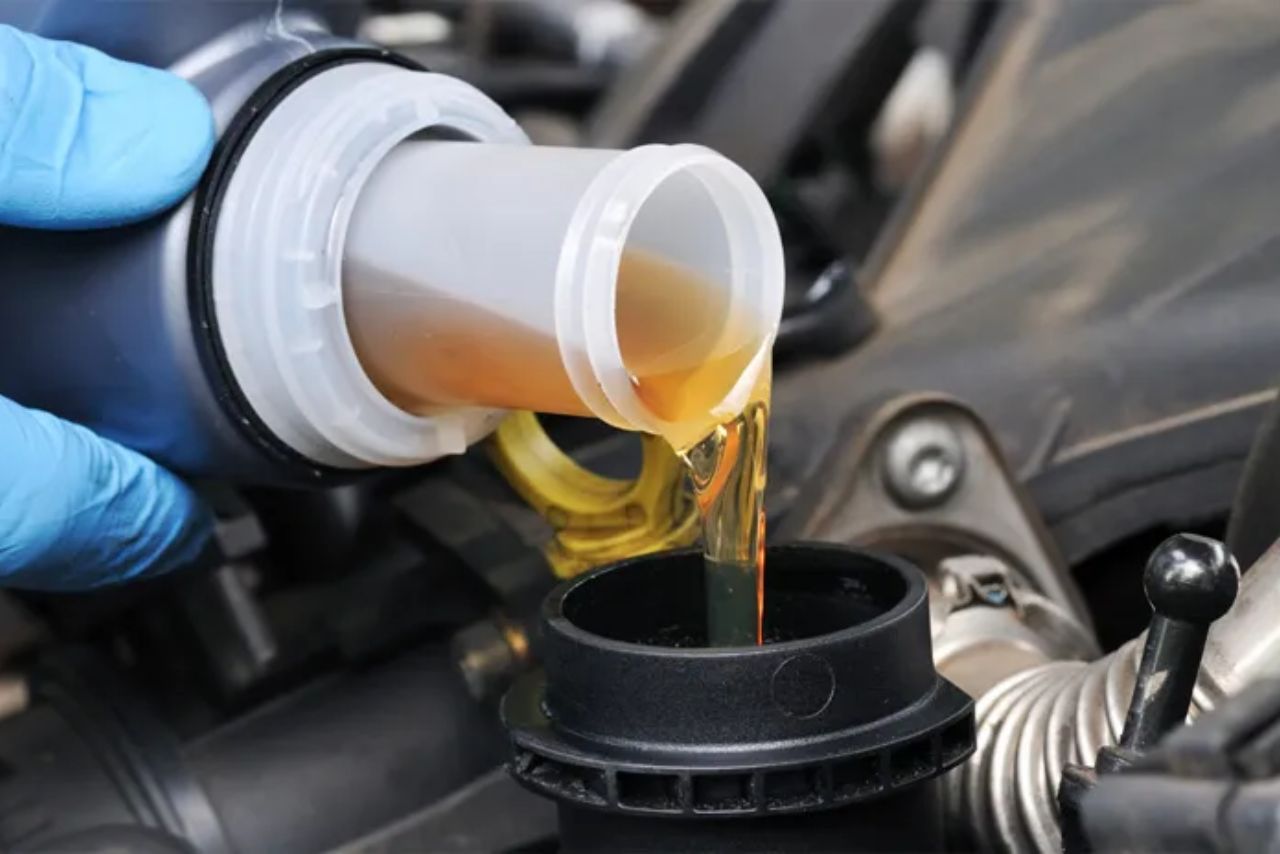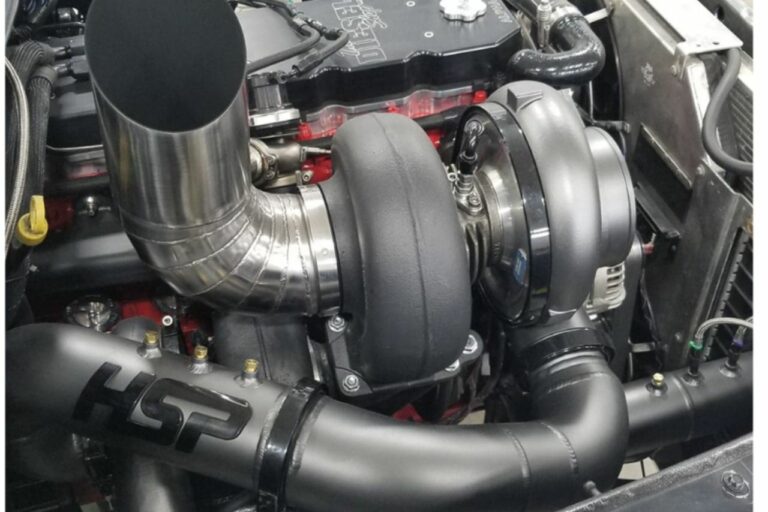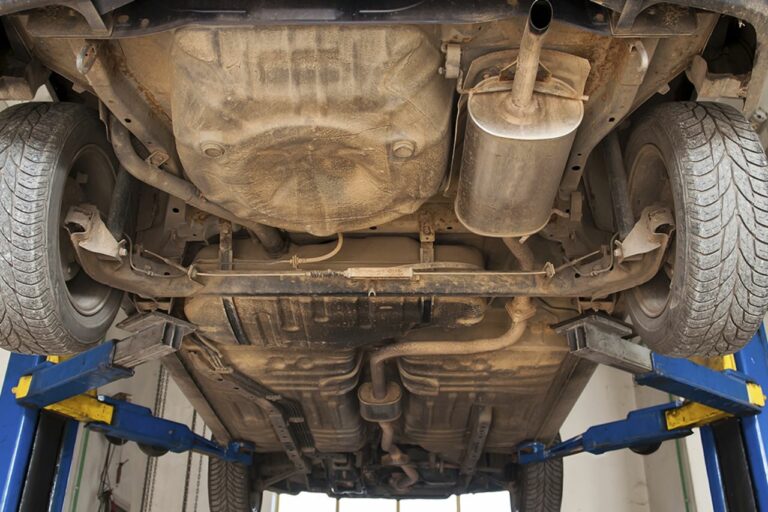When Is It Too Late To Change Transmission Fluid? (Answered!)

Are you wondering when it’s too late to change your transmission fluid?
Regular maintenance of your vehicle’s transmission is crucial to ensure its longevity and smooth operation.
Transmission fluid plays a key role in keeping your transmission healthy, and neglecting it can lead to costly repairs.
When Is It Too Late To Change Transmission Fluid?
It’s recommended to change the transmission fluid every 30,000 to 60,000 miles, depending on the make and model of the vehicle. However, if the transmission fluid has never been changed or has been neglected for an extended period of time, it may be too late to change it without causing damage to the transmission.
Signs that it’s too late to change the transmission fluid include a burnt smell, dark color, and a gritty texture.
In this case, it’s best to take the vehicle to a professional mechanic for an assessment.
In this article, we’ll discuss the recommended timeframe for changing your transmission fluid, signs that it’s time to change it, and the consequences of neglecting it.
We’ll also explore factors that affect the longevity of transmission fluid, how to check it, and tips for maintaining your transmission.
By the end of this article, you’ll have a better understanding of the importance of regular transmission maintenance and the consequences of neglecting it.
Importance of Regular Transmission Maintenance:
If you neglect regular transmission maintenance, you’re risking costly repairs and replacements down the line. This is why transmission maintenance benefits can’t be understated.
Your transmission is one of the most vital parts of your vehicle that helps it run smoothly.
It’s responsible for transferring power from the engine to the wheels, allowing your vehicle to move.
Without proper maintenance, your transmission can suffer from wear and tear, leading to problems such as slipping gears, rough shifting, and transmission failure.
One way to ensure your transmission stays in good condition is by performing a DIY transmission fluid change.
This involves draining the old fluid and replacing it with new fluid.
Regularly changing your transmission fluid can help prolong the life of your transmission, prevent damage, and save you money in the long run.
It’s important to follow the manufacturer’s recommendations for when to change your transmission fluid, but as a general rule, it’s recommended to change it every 30,000-60,000 miles.
Don’t neglect your transmission. Perform regular maintenance to keep it running smoothly for years to come.
Understanding Transmission Fluid:
You may not realize it, but your car’s transmission relies heavily on a special lubricant that helps it run smoothly.
This lubricant is known as transmission fluid, and it serves as a vital component in your car’s transmission system.
Transmission fluid is typically composed of a base oil, which can be either mineral or synthetic, and various additives.
These additives are designed to enhance the fluid’s performance and protect your transmission from wear and tear.
Transmission fluid additives play a critical role in ensuring that your car’s transmission operates efficiently.
They can improve the fluid’s viscosity, prevent oxidation, reduce friction, and protect against corrosion. Some additives also contain detergents that help keep your transmission clean.
It’s important to note that different types of transmission fluids may contain different additives.
Therefore, it’s crucial to use the right type of fluid for your vehicle and to follow the manufacturer’s recommended maintenance schedule to ensure optimal performance and longevity of your transmission.
Recommended Timeframe for Changing Transmission Fluid:
When properly maintained, your car’s transmission can last for many years.
One critical aspect of maintenance is changing the transmission fluid at the manufacturer’s recommended frequency.
The recommended frequency varies depending on the make and model of your car, but generally, it’s recommended to change the transmission fluid every 30,000 to 60,000 miles.
Here are three benefits of changing your transmission fluid at the recommended interval:
- Improved performance: Changing your transmission fluid can help improve the performance of your car by ensuring that the transmission is working optimally.
- Increased lifespan: Regularly changing your transmission fluid can help extend the lifespan of your transmission by reducing wear and tear on the internal components.
- Cost savings: By changing your transmission fluid at the recommended interval, you can avoid costly repairs and replacements down the line, potentially saving you hundreds or even thousands of dollars.
Signs that It’s Time to Change Transmission Fluid:
Don’t ignore these warning signs – your car may be trying to tell you something important about its transmission.
One of the most significant indicators that it’s time to change your transmission fluid is contamination.
Contaminants such as dirt, metal shavings, and other debris can accumulate in your transmission fluid over time, causing it to lose its effectiveness.
If you notice that the fluid has a burnt smell, it’s a clear indication that it’s time to change it.
Another sign to watch out for is the color of your transmission fluid.
Transmission fluid color indicators can help you determine whether it’s time for a change.
If the fluid is dark or has a brownish color, it’s a sign that it’s contaminated and needs to be changed.
On the other hand, if it’s pinkish or reddish, it means the fluid is relatively new and clean. It’s essential to keep an eye on the color of your transmission fluid to ensure that it’s in good condition and to avoid potential transmission problems down the road.
Consequences of Not Changing Transmission Fluid:
If you neglect changing your transmission fluid, you risk damaging important transmission components and causing costly repairs.
Over time, transmission fluid can break down and become contaminated with dirt, debris, and metal shavings.
This can cause the transmission to shift poorly, overheat, and eventually fail altogether.
Damage to Transmission Components:
Changing the transmission fluid regularly can prevent damage to the transmission components, so it’s important to stay on top of it.
If you neglect to change the transmission fluid, you risk damaging the gears, bearings, and other parts of your transmission.
This can lead to costly repairs or even the need for a full transmission replacement.
There are potential dangers to ignoring the warning signs of low or dirty transmission fluid. If you notice any strange noises or delayed shifting, it’s important to take your vehicle to a professional mechanic right away.
Prevention methods and safety measures include changing the transmission fluid according to your vehicle’s recommended maintenance schedule and using high-quality fluid.
Don’t wait until it’s too late to change your transmission fluid and protect your vehicle’s transmission components.
Costly Repairs:
Neglecting regular maintenance and ignoring warning signs of transmission problems can result in costly repairs.
If you wait too long to change your transmission fluid, the fluid can break down and no longer perform its intended function of lubricating and cooling the transmission components.
This can cause excessive wear and tear on the gears, bearings, and seals, which can ultimately lead to transmission failure.
The good news is that there are preventative measures you can take to avoid these costly repairs.
By staying up-to-date with your vehicle’s maintenance schedule and paying attention to any warning signs of transmission problems, you can catch potential issues early on and take action before they become major problems.
Additionally, if you’re comfortable with DIY maintenance, you can save money by changing your own transmission fluid.
Just be sure to consult your vehicle’s owner’s manual for proper procedures and fluid specifications.
Factors that Affect the Longevity of Transmission Fluid:
To extend the lifespan of your transmission fluid, you should regularly check for leaks and ensure proper ventilation in your vehicle.
But there are other factors that can affect the longevity of your transmission fluid.
Here are some of the most important ones:
- Driving conditions – If you frequently drive in stop-and-go traffic or tow heavy loads, your transmission fluid will experience more stress and may need to be changed more often.
- Type of fluid – Some types of transmission fluid are designed to last longer than others, so it’s important to use the right type for your vehicle.
- Age of the vehicle – Older vehicles may have more wear and tear on their transmissions, which can lead to more frequent fluid changes.
- Maintenance schedule – Following the manufacturer’s recommended maintenance schedule can help ensure that your transmission fluid is changed at the appropriate intervals and prevent costly repairs down the road.
By being aware of these factors, you can take steps to extend the life of your transmission fluid and keep your vehicle running smoothly. Remember, timely fluid changes are crucial to prevent expensive transmission repairs.
How to Check Transmission Fluid?
You can easily ensure the health of your vehicle’s transmission by regularly checking its fluid levels and maintaining them.
To do this, first, locate the transmission dipstick, which is usually near the engine oil dipstick. Pull out the dipstick and wipe it clean with a cloth.
Then, insert the dipstick back into the transmission and pull it out again, this time checking the color and level of the fluid.
The color of the transmission fluid should be a clear red or pink color. If the fluid is brown or black, it may be time for a fluid change.
The level of the fluid should also be between the minimum and maximum marks on the dipstick.
If it’s low, add more fluid, but be careful not to overfill. Regularly checking and maintaining your transmission fluid can prevent costly repairs and keep your vehicle running smoothly.
Tips for Maintaining Your Transmission:
One easy way to keep your car running smoothly is by regularly checking and maintaining the health of your transmission.
A well-maintained transmission will ensure that your car shifts smoothly and efficiently, and can help prevent costly repairs down the line.
Here is a transmission maintenance checklist to follow, as well as tips for a DIY transmission fluid change.
| Task | Frequency |
|---|---|
| Check transmission fluid level | Monthly |
| Check for leaks | Monthly |
| Change transmission fluid and filter | Every 30,000-60,000 miles |
| Inspect drive shafts and CV joints | Every 30,000-60,000 miles |
| Inspect transmission mounts | Every 50,000-100,000 miles |
To check your transmission fluid level, simply locate the dipstick under the hood and pull it out.
Wipe it clean with a rag, then reinsert it and pull it out again to see where the fluid level is. If it’s low, add more fluid as needed.
It’s also important to check for leaks, which can be a sign of a more serious transmission problem.
If you’re up for a DIY transmission fluid change, make sure to follow the manufacturer’s recommendations for the type of fluid to use and the frequency of changes.
Changing the transmission fluid and filter every 30,000-60,000 miles can help prevent debris buildup and ensure smooth shifts.
Additionally, inspecting the drive shafts and CV joints, as well as the transmission mounts, can help catch any issues before they become major problems.
By following these tips and completing regular maintenance, you can keep your transmission running smoothly and avoid costly repairs.
Frequently Asked Questions:
Can I change my transmission fluid myself or do I need to take it to a mechanic?
Yes, you can perform a DIY transmission fluid change, but it requires special tools and knowledge. Professional service guarantees proper disposal and correct fluid type. However, it can be more expensive. Consider your options carefully.
Is it necessary to change the transmission filter when changing the fluid?
When changing transmission fluid, it is important to also change the transmission filter. The filter helps to prevent debris from circulating through the system. Changing the fluid without the filter can lead to transmission damage.
How often should I check my transmission fluid levels?
To ensure proper transmission function, check your fluid levels monthly and before long trips. Signs of low levels include slipping, rough shifting, and strange noises. Use the correct type of fluid to prevent damage.
Can using the wrong type of transmission fluid damage my car?
Using the wrong type of transmission fluid can cause serious damage to your car. The consequences include slipping gears, transmission failure, and reduced fuel efficiency. Always follow your manufacturer’s recommendations to avoid transmission fluid damage.
Is flushing the transmission system better than just changing the fluid?
Flushing the transmission system is better than just changing the fluid as it removes all the old fluid, debris, and contaminants. Benefits of flushing include improved shifting, longer transmission life, and better fuel economy. Risks of neglecting include transmission failure and costly repairs.
Conclusion: When Is It Too Late To Change Transmission Fluid?
Transmission fluid plays a vital role in the smooth operation of a vehicle’s transmission system.
Regularly changing the transmission fluid can help to prevent damage and prolong the life of the transmission.
However, if the transmission fluid has never been changed or has been neglected for an extended period of time, it may be too late to change it without causing damage to the transmission.
This is because the old fluid may have become contaminated with debris and metal shavings, and may no longer be able to provide adequate lubrication and cooling.
Signs that it’s too late to change the transmission fluid include a burnt smell, dark color, and a gritty texture.
In such cases, it’s best to take the vehicle to a professional mechanic for an assessment.
Remember, it’s never too late to start taking care of your transmission. Don’t wait until it’s too late to make a change.






